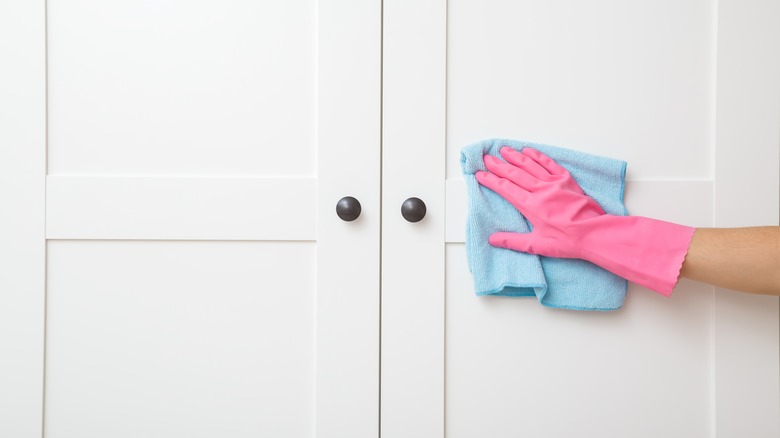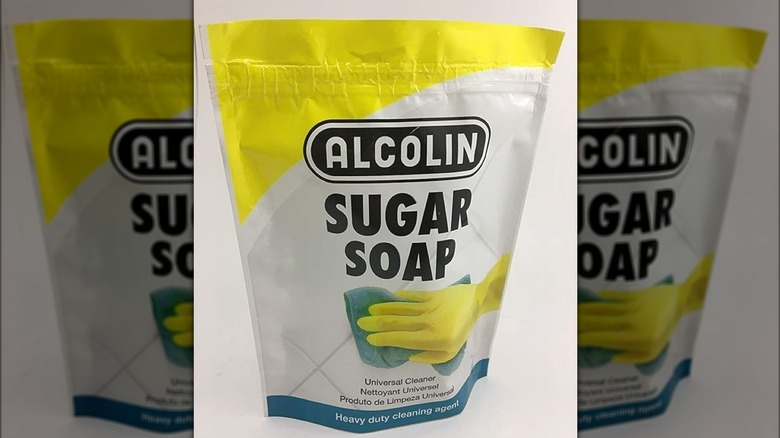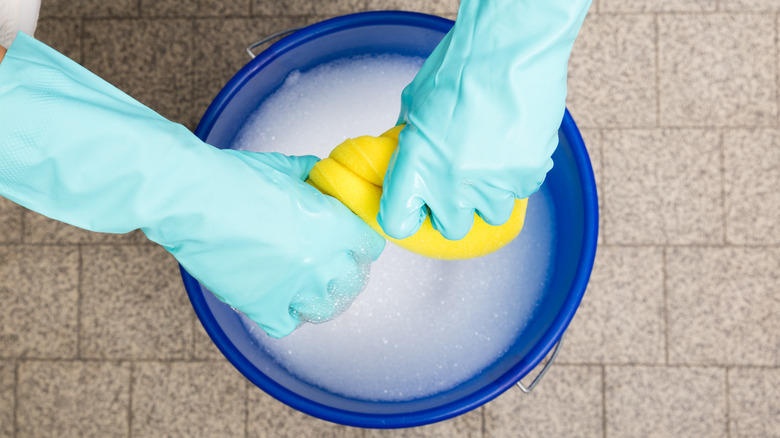Use This Secret Ingredient To Clean Your Doors Before A Fresh Coat Of Paint
We may receive a commission on purchases made from links.
If it's time to update the paint color of your interior or exterior doors, painting over dirt and grime isn't ideal. It can cause distortions in the new paint, including color differences, and even leave bumps when debris is caked on. You want to cover up this muck, and paint will help, but there's one ingredient to start with before you get the paintbrushes out. That's sugar soap.
The door's surface plays an important role in the finished look and the durability of the new coat of paint. If you don't clean off that surface, the paint cannot adhere properly and may chip, crack, or peel away. The dirt and oils from hands or food particles on the door make that adhesion impossible.
Sugar soap is a type of mild cleaning agent. It's designed for various cleaning projects, even helping you with more delicate surfaces, like cleaning wallpaper or scrubbing down your walls before painting them after removing that wallpaper. It's effective because it can safely remove dirt and grime, including those oils, without damaging the door's surface. Though sugar soap has its limitations — it won't be able to remove deep stains or texture on the door — it will work to give you a clean, ready-to-paint finish in most situations.
How sugar soap cleans doors
Sugar soap doesn't actually have sugar in it but gets its name from the sugar-like look of the dry powder it's composed of. It contains several ingredients, including sodium phosphate and sodium silicate, though each company that makes this product can alter ingredient makeup.
While many types of cleaning agents have a similar ingredient list, sodium silicate sets sugar soap apart. This compound adds just a small amount of grit, much like the texture of sugar itself. This added grit allows the soap product to scrub a bit better and remove more of the challenging areas of debris and dirt on the surface of well-used doors. Some versions also include sodium hydroxide, ideal for cleaning away organic material containing oils and fats, including grease off the kitchen pantry door, for example. It works to dissolve those materials off the surface. All of these ingredients dissolve in water.
Most often, sugar soap is sold as a powder that you add to water to create a light scrub. It's more commonly used in Europe than in the U.S., but you can create your own sugar soap-like mixture. Purchase washing soda — such as Harris Washing Soda ($28 on Amazon) — from a home improvement store or online retailer. Then, you just add 10 parts water to every 1 part washing soda to create a solution for your doors.
How to use sugar soap to clean your doors before you paint
Sugar soap isn't complicated to use, but it's important to check with the manufacturer about the steps to using that particular cleaning agent. Removing the door from the hinge and laying it flat is often beneficial to make cleaning the surface easier. Then, create the sugar soap mixture. This often involves diluting the powder or concentrate in warm water. Since it can cause skin and eye irritation as well as breathing complications in some people, wear goggles, gloves, and a mask — especially if you have asthma.
Simply use a clean sponge saturated in the soap and water mixture you run over the top of the door to scrub away the dirt. Using a bit of pressure and a circular motion may help to loosen some dirt from the door. Once you clean the surface fully, you can rinse off the soap – don't just spot-treat, but do the whole door at once to create an even clean. You can use clean, warm water and a clean cloth to do this. This product isn't likely to leave a residue on the surface, but it's still a good idea to rinse the door off well. Make sure to do the edges, too. Allow it to fully dry before painting. It may be beneficial to repeat the process if the paint finish is not in perfect shape and needs more attention.


